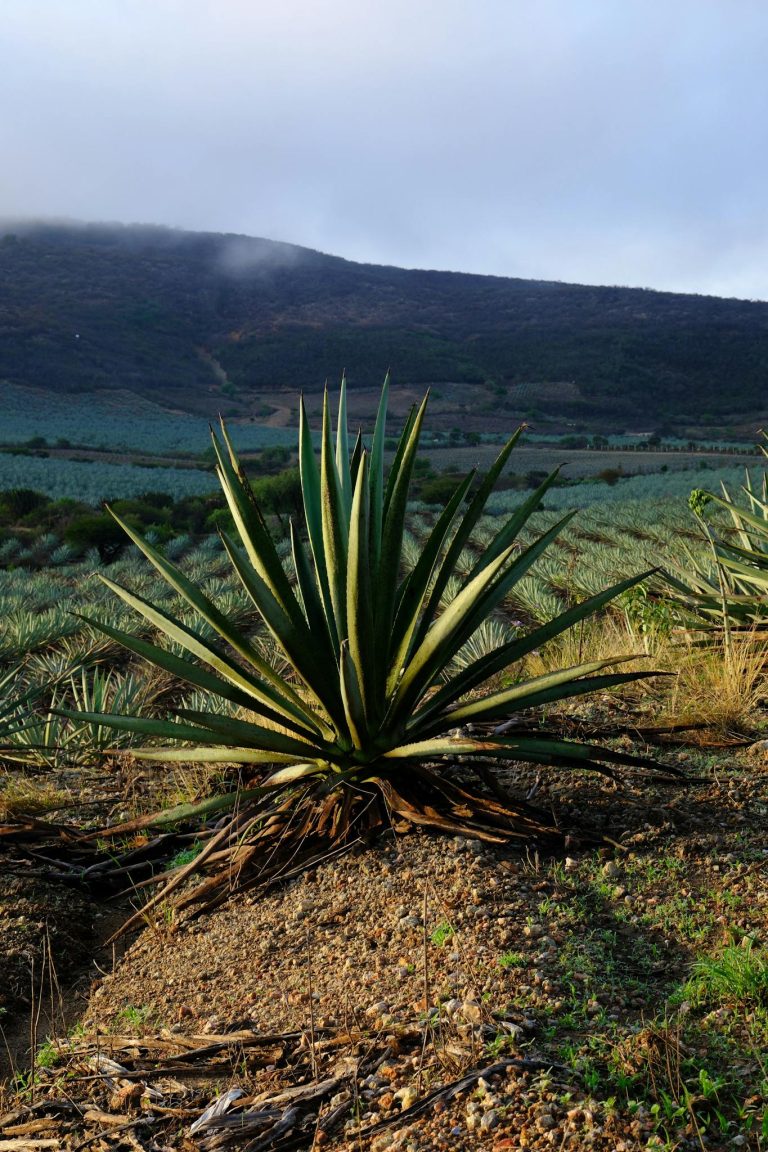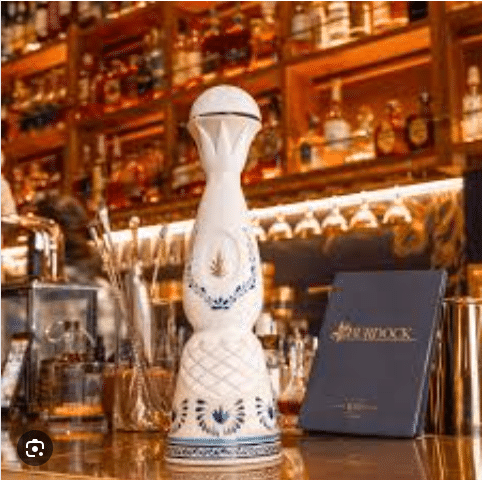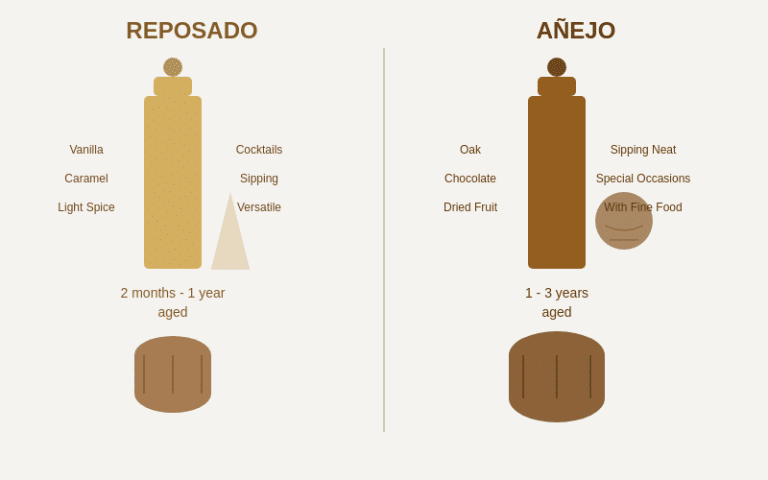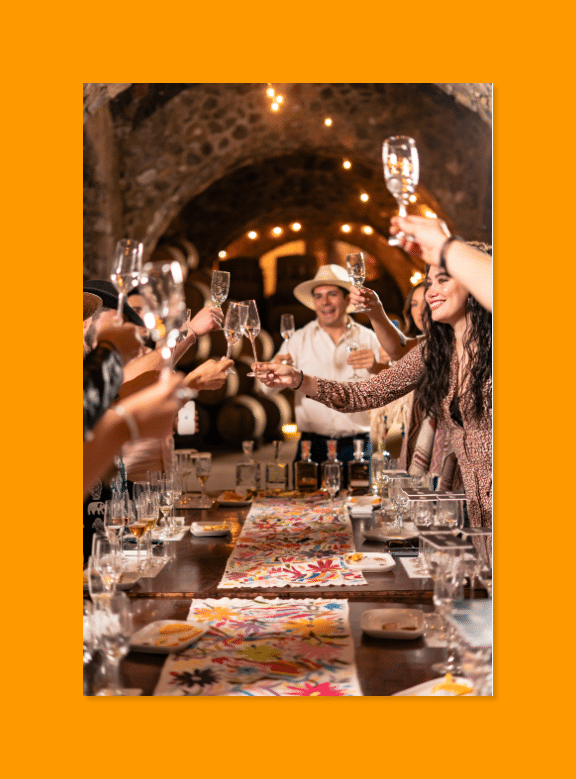Tequila Proof and Alcohol Content Guide
Did you know that not all tequilas are created equal when it comes to alcohol content? That’s right!…
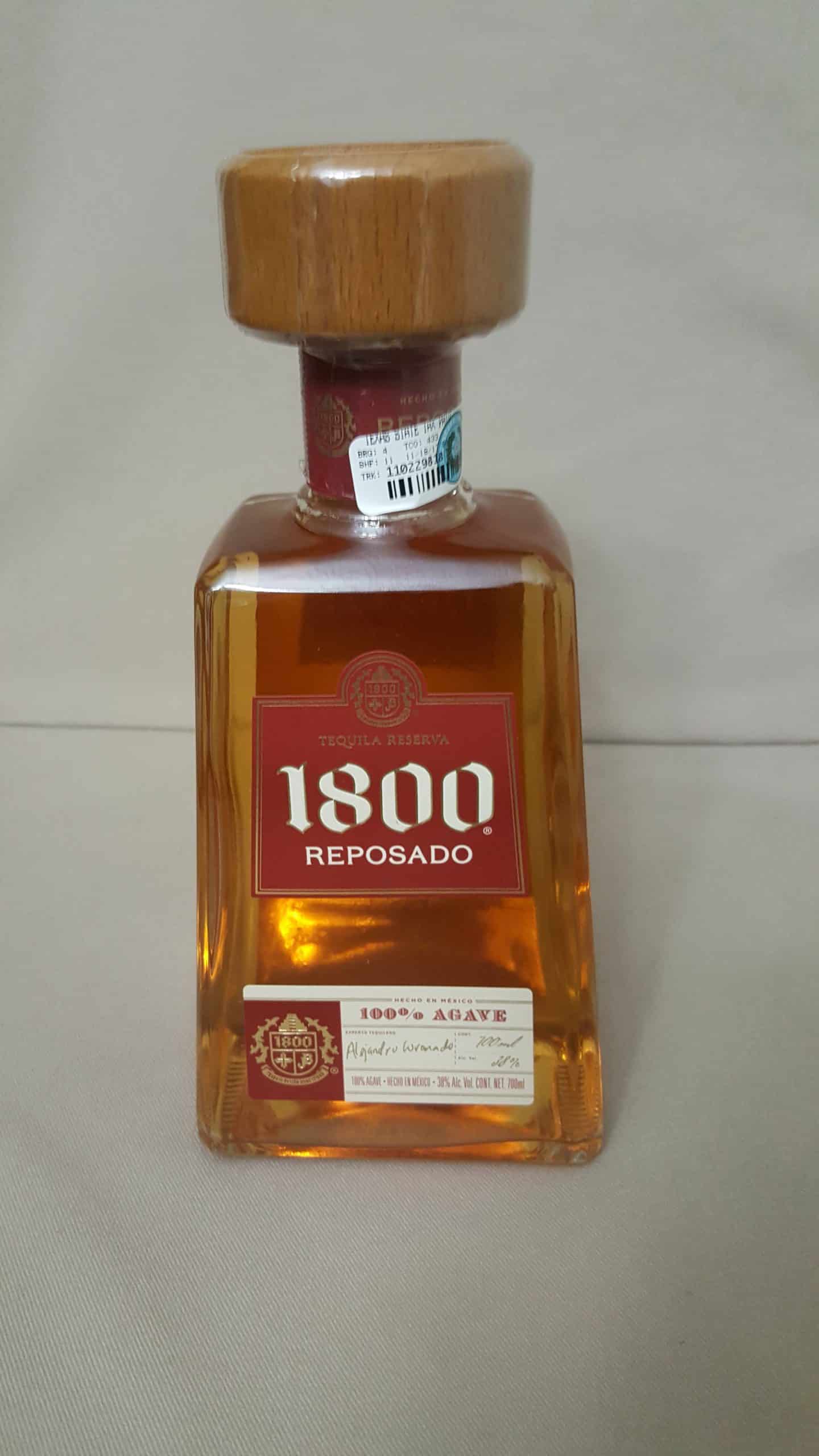
Did you know that not all tequilas are created equal when it comes to alcohol content? That’s right! While many assume all tequila sits at the same proof, there’s actually a fascinating range of strengths in this beloved Mexican spirit. In fact, premium tequilas can vary from a mild 35% ABV all the way up to a powerful 55%! Whether you’re a casual sipper or a devoted aficionado, understanding tequila proof and alcohol content is essential for appreciating this complex spirit. In this guide, I’ll walk you through everything you need to know about tequila strength, how it impacts flavor, and what to look for when selecting your next bottle!
What is Tequila Proof vs. Alcohol Content?
I still laugh about my first tequila tasting disaster. I was clueless when asked if 80 proof equaled 40% alcohol. Spoiler alert: it does!
Tequila ABV percentage (Alcohol By Volume) is the global standard for measuring alcohol content. Most standard tequila proof falls between 70-110, with 80 proof being most common. Remember this simple formula: how is tequila proof calculated? Just double the ABV! A 40% ABV tequila equals 80 proof.
Different types vary slightly in strength. Blanco tequila alcohol percentage typically sits at 40% (80 proof), while some reposado tequila ABV can reach 42-43%. Añejo tequila proof range is similar, though you’ll find some premium options at 45% ABV (90 proof).
For those seeking something stronger, overproof tequila options exist, with some high-proof tequila brands reaching the maximum proof tequila available by law—55% ABV or 110 proof. That’s some serious strength!
According to NOM tequila regulations alcohol content must be between 35-55% ABV to legally be called tequila. This legal alcohol content in tequila ensures quality while maintaining traditional standards.
Interestingly, how alcohol affects tequila flavor is significant. Higher proof often intensifies agave notes, while aging can subtly alter alcohol levels. The best proof for sipping tequila is debatable, but many connoisseurs prefer standard 80 proof expressions for their balanced flavor.
When comparing tequila strength to other spirits, it’s generally similar to whiskey and vodka, though mezcal vs tequila alcohol content often shows mezcal running slightly higher.
Whether you’re mixing tequila cocktails or sipping it neat, understanding proof helps avoid those morning-after regrets!
Standard Alcohol Content in Different Types of Tequila
I learned about tequila strength differences the hard way after a memorable (or not-so-memorable) night mixing blancos and añejos without regard for their alcohol content! Trust me, knowing your tequila ABV percentage matters.
Blanco tequila alcohol percentage typically sits at 40% ABV (80 proof), though some brands push it higher. I’ve found a few high-proof tequila brands offering blancos at 45-46% ABV. These unaged spirits deliver that pure agave punch without barrel influence affecting the alcohol.
Reposado tequila ABV generally matches blancos at around 40%, but the aging process (2-12 months) can create subtle variations. Some premium reposados might reach 42-43% ABV, adding complexity to the golden spirit. The standard tequila proof remains 80 for most mainstream reposado options.
The añejo tequila proof range follows similar patterns, despite longer aging (1-3 years). Most hover at 40% ABV, though I’ve encountered some fantastic añejos at 43%. Extra añejo proof standards typically mirror regular añejos, though some luxury expressions dial it back to 38% for smoother sipping.
Flavored tequila alcohol content often drops below traditional versions. Many infused tequila ABV ranges fall between 30-35%, sacrificing strength for accessibility. I learned this after wondering why my jalapeño-infused tequila margaritas weren’t as potent as expected!
When comparing tequila strength with other spirits, whiskey usually matches tequila’s 40-45% range. Vodka typically sits at 40%, while mezcal vs tequila alcohol content often shows mezcal running slightly higher (45-50%). Rum varies widely, from 37.5% to overproof versions exceeding 60%.
Understanding these variations has definitely improved my home bartending game and helped avoid those tequila hangover and proof correlation problems we’ve all experienced!
Factors Affecting Tequila’s Alcohol Content
I never realized how many variables impact tequila strength until I visited a distillery in Jalisco last year! The agave impact on tequila proof starts right in the field, with mature Blue Weber agave containing higher sugar levels that convert to alcohol during fermentation. Some craft tequila alcohol variations come from regional differences in agave cultivation—highlands vs. lowlands makes a surprising difference.
The tequila distillation alcohol levels are where things get really technical. Most producers distill twice, with each run concentrating the alcohol. I watched in fascination as the master distiller made precise “cuts,” separating the hearts (middle portion) from heads and tails to achieve their target alcohol content. Some high-alcohol tequila characteristics develop during this critical phase.
The tequila aging and alcohol content relationship surprised me most. Those beautiful oak barrels don’t just add flavor! Extended aging can actually reduce ABV through evaporation. This explains why some extra añejo proof standards might be slightly lower than younger expressions. The so-called “angel’s share” is real, folks!
The tequila dilution process is another eye-opener. Most tequilas come off the still at 55-60% ABV, then get diluted with purified water to reach commercial proof. Premium barrel proof tequila expressions skip this step, delivering uncut spirits straight from the barrel.
NOM tequila regulations alcohol standards keep everything legitimate. Mexican law requires 35-55% ABV (70-110 proof) for authentic tequila. These alcohol tolerance in tequila production guidelines ensure consistency while allowing for creative expression.
Understanding these factors has completely transformed how I appreciate tequila. The next time you sip, remember—that perfect alcohol balance represents generations of expertise and careful decision-making!
High-Proof Tequilas: What to Know
I still remember my first encounter with an overproof tequila options at a friend’s house. Boy, was I unprepared! The label read 110 proof, but I sipped it like my usual 80 proof standby. Big mistake!
When exploring the strongest commercial tequilas, you’ll find most hover around 55% ABV (110 proof), which is the maximum proof tequila available under Mexican regulations. These high-proof tequila brands pack a serious punch compared to standard tequila proof options. Some notable examples include Tapatio 110, El Tesoro Platinum, and Don Julio 70 Cristalino at higher strengths.
The high-alcohol tequila characteristics create a totally different experience. The ethanol amplifies the agave’s natural intensity, often delivering bolder pepper, citrus, and mineral notes. I’ve found the best proof for sipping tequila really depends on your experience level—beginners might want to stick with standard proof while developing their palate.
There’s a definite tequila proof and price correlation, with these premium options often commanding higher prices due to their intensity and production methods. The tequila proof for cocktails consideration is worth noting too—these potent spirits can throw off classic recipes if you don’t adjust other ingredients accordingly.
When serving high-proof tequila, I learned (the hard way) to take precautions. Always warn guests about strength, serve smaller pours than usual, and provide plenty of water. The tequila hangover and proof correlation is very real! These robust expressions are best approached with respect—sip slowly, appreciate the complexity, and know that temperature and tequila proof interact differently than with standard versions.
While challenging, exploring barrel proof tequila expressions has completely transformed my appreciation for this magnificent spirit. Just remember: with great proof comes great responsibility!
How Alcohol Content Affects Tequila Flavor and Experience
I discovered the fascinating relationship between alcohol content and flavor perception by accident at a tasting event last summer. The same tequila at different proofs tasted like completely different spirits!
How alcohol affects tequila flavor is complex. At standard tequila proof (80), the agave’s natural sweetness shines through with balanced citrus and herbal notes. But high-proof tequila brands (100+ proof) deliver more intense experiences—the alcohol carries volatile compounds more efficiently to your nose and taste buds.
Temperature and tequila proof interact in surprising ways too. I served a barrel proof tequila expression chilled once, thinking it would tame the heat, but it actually muted the complexity! Warmer temperatures release more aromatics in high-alcohol tequila characteristics, while standard-proof options remain versatile across serving temperatures.
The mouthfeel differences are striking. Standard 40% ABV creates a pleasant medium-bodied sensation, while overproof tequila options produce a weightier, almost oily texture that coats your palate. This affects tequila strength comparison when sampling different expressions side-by-side.
When it comes to tequila and food pairings, I’ve found standard proof works wonderfully with most dishes. My reposado tequila ABV at 40% perfectly complements spicy foods without overwhelming them. When serving high-proof tequila with food, richer, fattier dishes stand up better to the increased alcohol intensity.
The best proof for sipping tequila depends on your experience level and preferences. Beginners might appreciate the approachability of 35-40% ABV, while enthusiasts often enjoy the complexity that emerges around 45-50%. Understanding these nuances has completely transformed my tequila appreciation journey!
Choosing the Right Tequila Proof for Different Uses
I learned the hard way that the best proof for sipping tequila isn’t always the strongest! After hosting several tasting parties, I’ve found 40-45% ABV hits that sweet spot where agave flavors shine without alcohol burn dominating.
For tequila cocktails alcohol content, I prefer using 40% ABV (80 proof) options in most recipes. Higher-proof expressions can overwhelm delicate ingredients, though they do stand up beautifully in spirit-forward drinks like an Old Fashioned. I once ruined a batch of margaritas using a 110-proof blanco—way too aggressive!
Cooking with high-proof tequila presents its own challenges. I’ve discovered that standard 80-proof works perfectly for most culinary applications. The alcohol cooks off consistently while leaving behind those wonderful agave notes. When making my famous tequila-lime shrimp, the standard proof delivers flavor without overwhelming the delicate seafood.
When organizing tequila flight alcohol percentages, I typically arrange from lowest to highest proof, allowing guests to acclimate their palates gradually. Starting with a cristalino tequila alcohol content around 35-38% before moving to standard proof expressions helps newcomers appreciate the nuances.
Your personal experience level should guide your tequila proof selection. For beginners, I always recommend standard proof options (38-40% ABV) which provide authentic flavor without overwhelming intensity. As you develop your palate, exploring barrel proof tequila expressions becomes more rewarding. The tequila strength comparison becomes apparent as you progress through different expressions.
Remember that tequila proof and price correlation isn’t always straightforward—some premium expressions actually feature lower ABV percentages to showcase subtle flavors. Trust your own preferences and don’t assume stronger always means better!
Conclusion
Understanding tequila proof and alcohol content is more than just knowing how strong your drink will be—it’s about appreciating how this essential characteristic shapes the entire tequila experience. From the delicate balance of flavors in a 40% ABV añejo to the bold intensity of a 55% overproof blanco, the alcohol content plays a crucial role in what makes each tequila unique. Next time you’re browsing the spirits aisle or ordering at a bar, take a moment to check the proof—it might just help you discover your new favorite expression! Remember, the best tequila isn’t necessarily the strongest or the mildest, but the one that brings you the most enjoyment. ¡Salud!


